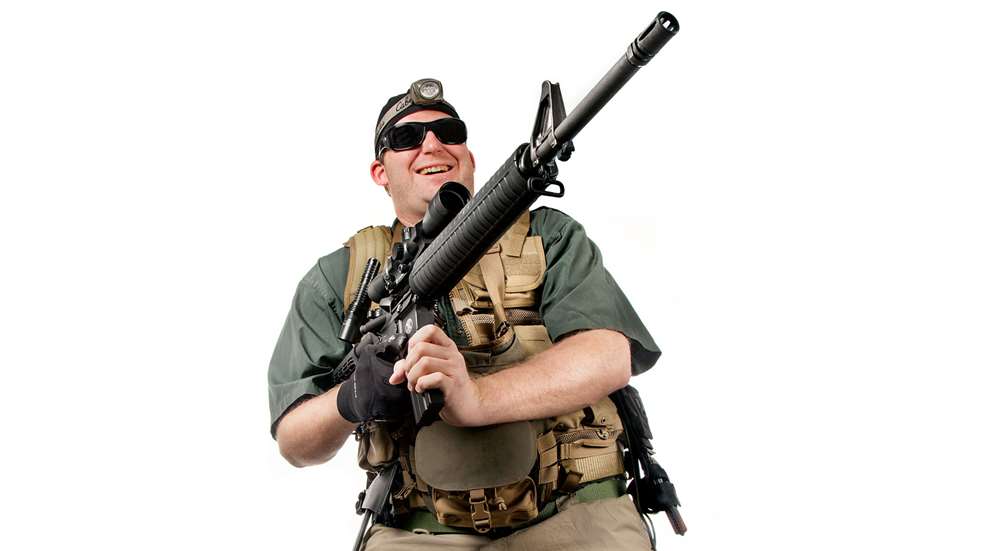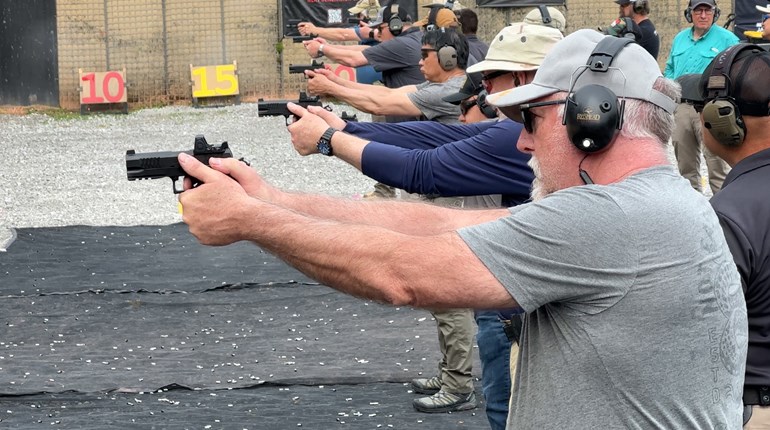
While covering vaguely relevant and semi-practical riflery topics each month, I sometimes fail to maintain the serious demeanor that bona fide gun-scribes exude from every pore. Invariably, the magnetic force of satire draws me across the centerline and into trouble while poking fun at people and things around the firearm world, including myself. Hence, my April columns occasionally feature a joke embedded within copious, legitimate wisdomisms. Much to the relief of the ever-solemn editorial staff, I’m breaking that tradition this year.
This year, I’m going to share a few of the more stupider morsels of advice given in the company of men and women who spend their professional lives in the company of guns and bullets. While people close to me know I’m fluent in the spoken form of such idiocy, regular readers have witnessed it in literary form. There’s my substitution of foot-pounds of torque where inch-pounds were required, my conflating line-of-bore with line-of sight and that time I …oh, never mind. The point is, most of us succumb to occasional forays into the Bad Advice Fairy realm. Still, some folks have the capacity to weave it into an art form, as evidenced here. While most of my sources remain unidentified, the full ridiculosity of their observations is laid bare here in all its naked glory. Please disregard all advice presented—starting now.
My first exposure to bad firearm advice came when I was a kid. A man in our neighborhood, who claimed to have been a commando, was full of combat-survival acumen. For example, he advised that after parachuting into enemy territory, one must immediately jump up and spin 360 degrees while firing on full-auto. To a bunch of elementary school kids, this was pure genius. What red-blooded American wouldn’t do the sub-gun spin after dropping into bad-guy land? Duh. Thankfully, by the time a 21-year-old version of me made an actual combat jump into non-imaginary enemy territory, I was slightly more discerning than my 12-year-old self.
Ten years ago, a friend (who owns a well-known firearm manufacturing company) got taken in by a carnival-barker-turned-salesman into coating several firearms with an environmentally friendly wonder oil. Two months later, and despite his strict adherence to the instructions, my friend described how every one of his guns’ actions was seized by a sludge-like “glubricant.” A liberal application of rubber mallet was required to loosen things enough for detailed cleaning. Since I’d fallen for the same ruse, I did a quick check of my own firearms and found identical results. My friend’s solution was to develop and market a hi-tech lube that doesn’t turn into glue. Mine was to revert back to using bacon grease.
Back before web videos could teach a toddler to land a space shuttle, a fellow gunsmithing student told me about a gas-gun problem he was experiencing. Someone at a different school, who was obviously moonlighting from a full-time, circus-clown gig, had talked my course mate into “freefloating” his AR-style rifle’s gas block. Perceiving the total lack of comprehension behind my dumfounded look, he explained that the gas block screws were only partially tightened, then secured with a thread-locking compound. This allowed the gas block and tube to wobble, supposedly to increase accuracy. It did not. What it did do was disable the rifle’s semi-auto function. After I explained why his AR wasn’t working, my friend overcame his gullibility embarrassment by starting a very successful custom-firearm business.
A retired FBI Special Agent friend relayed that once, while working in Virginia, an instructor on a different range had his students lie on their backs in front of their targets. They were told to react as if they had been knocked backwards by the targets they had been engaging, which now “stood” over the students. Apparently, no one noticed how the range’s backstop was no longer backing or stopping. The students’ projectiles passed over the berm and descended upon a not-so-distant neighborhood. Fortunately, no one was injured. Nonetheless, the range was permanently closed, and someone probably got reassigned to the FBI’s highly desirable Arctic Circle field office.
Several of my old SOF mates teach others how to shoot well and move efficiently. A common notion they dispel is that there’s no need to aim in close-quarters battle (CQB). While coaching through his training and gear company, SOB Tactical, John “Sheriff of Baghdad” McPhee says he’s had to disabuse many a new student of the belief that “CQB is all about speed and [instinctive] point shooting.” A variation of this mindset holds that there’s “regular accuracy” on the range and “combat accuracy” in a gunfight, the distinction being that you aim in the former, while spraying indiscriminately toward the bad guys in the latter. That’s true when you’re in a war zone and fighting your way out of a near ambush, providing suppressive fire or defending against a wave of attacking enemy. I’m told it also works in video games.
A textbook example of bad firearm advice comes from a different Army buddy, Brian Luettke, who retired from a distinguished federal law-enforcement career and now runs a firearm-training and consulting company. Luettke relates that during one training event, an LE instructor told recruits that if they had to deploy a long gun while on patrol, but then needed to use their hands to arrest a suspect, the firearm should first be disabled so that it could not be used against the officer. Suggestions included hitting the barrel or receiver against a tree or other hard object to render the long gun unusable. Sure, or maybe use a sling. Just sayin’.
I have enough of these stories to populate a regular “(Nearly) Harmed Citizen” column.
However, I’ll end here with my all-time favorite: In 1963, my step-father’s USAF basic-training class received instruction on the newly adopted M16 rifle. He and his fellow trainees were told that its high-tech operating system could be cleaned by simply holding the rifle under water and firing a live round. Providentially, no actual M16s were on hand for demonstration purposes. If anyone knows whether later USAF trainees saw this technique in action, or has other “Bad Advice Fairy” stories to share, please e-mail this magazine’s Editor-in-Chief. A full inbox is the only thing he enjoys more than a Caramel Macchiato Frappe Espresso Cappu-ccino during the mid-afternoon office coffee break and nap hour. [Editor’s note: We’ll see if that check cashes this month, Adelmann … ]





































